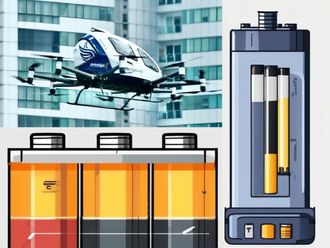The drop in petroleum prices has had a larger impact than was anticipated. No amount of planning could have predicted the current economic state. Fuelling this economic slowdown are the global currency fluctuations and the geopolitical turbulences.
Economies that are diversified across industries, such as the UAE, would be more resilient to weather this global economic downturn.
Organisations across the globe and within the region are unable to predict when and how the economic recovery would begin. Irrespective of the economic slowdown, customers expect the same level of services, if not better, and stake holders expect consistent growth, if not higher growth rates.
Customers and end users are demanding higher and higher personalisation of services, thereby forcing organisations to continuously innovate and differentiate themselves. Competition across industries is being redefined and past performances does not guarantee future growth, and even existence.
Organisations face the risk of being irrelevant if they do not innovate and transform.
Organisations are being forced to redefine their “business and operating models”. Forward looking organisations continue to innovate, transform, differentiate and grow, despite a weak economic outlook and possible budget cuts.
So how do these organisations get access to additional budgets that fuel their innovation and transformation initiatives?
Smart-organisations are quick to identify what is “core” and “non-core” to their business. To begin this transformational journey, organisations must review their past and present IT expenditure and classify the IT expenditure that was required to keep the lights-on ie Business-as-Usual (BAU) and the IT expenditure on new projects and systems.
To ascertain what is core to their business, they adopt a participative and collaborative path by organising a series of workshops represented by key stake holders from Business, IT and operations. They discuss the organisation’s priorities, business strategies and their alignment to the IT initiatives. At times and depending on the criticality, these workshops are chaired by the senior management to arrive at a faster consensus.
They look at outsourcing what is non-core to their business, in a phased manner, thereby avoiding disruptions to their business. By shifting the non-core activities, they are able to free up resources that were locked up for intensive application maintenance, infrastructure and system tasks besides other Business-as-Usual activities. These freed up resources are reallocated to drive their strategic IT initiatives.
By moving out non-core activities, organisations gain in productivity, efficiency and more importantly save on costs. They are able to drive higher service levels more consistently and scale capacity as their business grows. The cost savings gained from shifting out non-core activities is diverted to fund their innovation and transformation initiatives.
While driving Innovation, organisation must look at business processes that can reduce cost by at least 20 per cent or increase revenues by at least 20 per cent. Innovation does not have to an expensive initiative. It can be progressive and targeted at the high impact areas of the business.
Innovation should be encouraged across employees and at all levels of the organisation through a simple “ideation framework”. Ideas captured should be qualified and adopted based on their merits. Innovation should also be encouraged from outside the organisation ie by evaluating best practices across customers, suppliers, competitors and even across non related industries.
When moving out what is non-core, organisations today have a choice. A choice of either outsourcing under the classical on-site/offshore managed services model or moving their non-core applications to a public or private cloud. When moving to a managed services model, they could look at engaging with a partner who is able to share the risks and rewards with them. Depending on the maturity of the organisation and the partner, they could also adapt to an Outcome-based-pricing model, where the partner is paid based on the business outcomes of the organisation.
Organisations could also choose to move their non-core applications and new projects to the public or private cloud.
The cloud offers there three broad model ie SaaS (software as a Service), PaaS (platform as a service) and IaaS (infrastructure as a Service), depending on the organisation’s needs. The most commonly adopted cloud model by organisations across the globe as well as in the region is SaaS. In the near future, with an increasing maturity in cloud adoption, and its associated security concerns being addressed, we would witness an increased adoption to include PaaS and IaaS.
To stay relevant and ensure continued existence, transformation is not a choice anymore, it is the new mandate.
Innovation is at the core, fuelling transformation. Funding innovation needs a new way of thinking and new ways of working.
The writer is the Executive Vice-President of Dubai-based TransSys Solutions.











